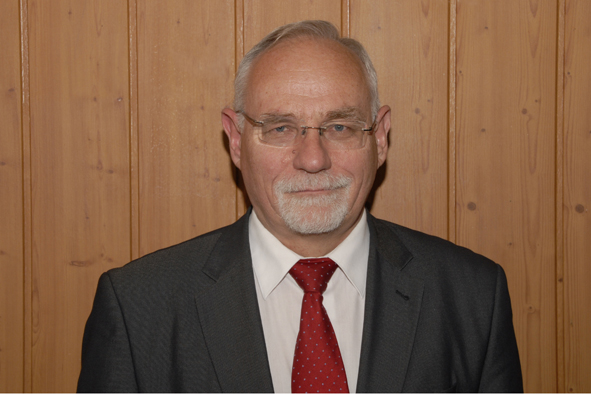

Assessment of the development of innovation in the Polish food sector
The article analyzes the development of innovation in the Polish food industry using the SWOT method. SWOT analysis compares strengths and weaknesses to find potential strategic advantages. In turn, opportunities analysis focuses on the assessment of the resources which should have a positive impact on future development. The threats occurring in the environment of the food industry are defined as reasonably probable events that may inhibit the further development of innovation.
STRENGTHS
The development of the Polish food industry in the 21st century has been determined by the country’s membership in the European Union. As production increased, the strong competition on the EU market resulted in a rapid improvement of the efficiency of the Polish food industry. The efficiency of labor input as well as material and capital expenditure improved as well, which contributed to the increase of the economic surplus and profit of food producers. The growing exports influenced the development of enterprises and their competitiveness, and at the same time stimulated their innovativeness by providing financial resources for the development of this type of activity.
Most Polish enterprises have quality certificates allowing for the production of safe and healthy food. This increased the recognition of Polish food, especially among demanding consumers from Western European countries. This is reflected in high export dynamics and a positive balance in foreign trade turnover with these countries.
However, the most important factors for the growth of exports and production for the domestic market were relatively low prices and high quality of products. The former resulted mainly from lower labor costs and prices of domestic raw materials.
WEAKNESSES
Low spending on R&D activity definitely constitutes a weakness, both at the scale of the entire economy and the food industry. This results in low innovative activity on the part of enterprises with domestic capital, especially in terms of products, organization, and marketing.
Another weakness of the food industry is the still insufficient recognition of Polish brands on the EU and global markets, caused mainly by inadequate promotional activities and their inability to acquire international contacts.
Enterprises in the food industry show poor cooperation in the field of innovation. In the years 2012- 2014 only 13.6% food producers and 27.9% of beverage producers declared such cooperation. Even fewer entities cooperated under cluster initiatives – 11.2 and 11.8% of companies, respectively. The tendency to cooperate in this area was greater only for the producers of tobacco products1.
OPPORTUNITIES
The growth of production on the domestic market is going to depend on the increase of the wealth of Polish consumers, who will also require more innovative products and a wider range of goods.
Opportunities for the development of innovation in the food industry result from the possibility of increasing production for export, not only to EU countries, but also to other countries around the world. However, the increase in exports must result from increased innovation, as manifested by the development of new competitive advantages of export products in terms of, for example, health benefits, flavor, wider assortment, development of premium products, etc.
The National Center for Research and Development is launching two funds with PLN 2 billion in total available for investments. These funds will invest in new, promising undertakings of companies operating in the new technologies sector, also related to the food industry (promising start-ups)2.
When it comes to the environment supporting innovation in enterprises,there are also more public as well as private entities with whom companies can cooperate to obtain information about the availability of new solutions, conditions for obtaining them, benefits resulting from their implementation and application in companies. Such cooperation should increase the number of implementations and reduce the associated expenses.
Investments in robots and automatic lines also constitute an opportunity. Robots, replacing employees, perform their tasks faster as well as more efficiently, repetitively, and precisely, so it is easier to achieve very high quality of the final product.
The development of robotization and automation in the food industry in Poland is to a large extent tied to the areas dominated by transnational corporations, e.g. brewing, tobacco, spirits, sugar, non-alcoholic beverages, etc. The brewing industry in our country is one of the most modern in Europe, as evidenced by its results in terms of work efficiency and technical equipment per employee. Decisions concerning the level of innovativeness of their branches in Poland depend on many factors: competitiveness and position on the local market, export directions, e.g. to Central and Eastern Europe or developed Western European countries, modernization or construction of a branch from scratch, etc.
In industries dominated by domestic enterprises investments in robots and automatic lines are less frequent, but also present. For example, in the Tago confectionery company 12 robots have been working on a state-of-the-art line for the production and packaging of cookies since 2015. For three years the company has been investing heavily in automating the packaging of sweets3. Another company, Polmlek, opened a fully automated whey and lactose processing plant in Lidzbark Warmiński in 2017.
Investments in R&D and implementation of innovations in the food industry with the participation of foreign capital, especially of transnational corporations, is going to play an increasingly important role. This should translate into a further increase in the international competitiveness of this sector.



THREATS
Further development of production and exports in the Polish food industry in the coming years will largely depend on external factors related to the European Union’s position on such issues as: financial policy (subsidies for agriculture and the food industry, customs barriers, etc.), scope of cooperation with other blocs of countries, such as MERCOSUR, limitation of speculation on the prices of agricultural commodities and currency exchange rates, food security, growing energy prices, global economy, growth rate of the demand for food in developing countries, technical and technological development in the field of food production, transport, and storage, etc.
Other factors hindering the development of innovation in our food industry may also include the frequently changing regulations, both domestic and EU, their increasingly wider scope, growing requirements for the protection of consumers, competition, and the environment, as well as all the required documentation.
Most experts and scientists believe that cooperation between science and business is not satisfactory. First of all, the percentage of implementations of specific research results developed by scientists is low5.
Other threats include the pressure of strong competition as a result of market saturation, shorter product life cycles, and faster development of new technologies, shortening the duration of the innovative cycle from idea to launch.
In a long-term perspective, low labor costs may not be sufficient to increase or even maintain the existing competitiveness of this sector on the domestic and global markets. The lack of innovative solutions may be particularly visible during expansion to markets outside the EU. Then the food industry will be forced to compete both with countries with a much higher level of innovation as well as those with lower labor costs.
According to a report prepared by Boston Consulting Group, a strategic consulting firm, companies experience difficulties managing talent and leadership, evaluating results and rewarding the best people, and recruiting employees to R&D departments. Without people with appropriate qualifications, it will be difficult to increase innovation even with higher expenditure and investments6.
CONCLUSIONS
In general, it can be argued that the macroeconomic determinants of the development of innovation in the Polish food industry constitute a derivative of global conditions and the internal policy of the European Union. The role of the state in shaping priority directions for the development of this sector and creating a good business environment is, of course, still relevant. However, the most important aspect, especially for enterprises with domestic capital, is to change their previous approach to innovation, both among management and employees. It should include: changes in culture and value systems, introduction of innovation development strategies, use of employee motivation tools, demonstration of the involvement of top management in the problem, and providing assistance to the participants of the innovation process.
1 I. Szczepaniak, Współpraca w zakresie działalności innowacyjnej…, op. cit., p. 243-250
2 M. Kołtuniak, Rządowa agencja łączy siły z korporacjami, „Rzeczpospolita” of 26.04.2017
3 M. Duszczyk, Słodka robota precyzyjnego robota, „Rzeczpospolita” of 21.01.2017
4 Współpraca nauki z biznesem przynosi efekty. Innowacyjne rozwiązania dla sektora rolno-spożywczego, www.portalspozywczy.pl (date of access: 29.07.2016)
5 A. Błaszczak, Deficyt pracowników może utrudnić rozwój innowacji, „Rzeczpospolita” of 20.09.2017
Author:
Prof. Piotr Chechelski, IERiGŻ-PIB
Last Updated on May 6, 2021 by Łukasz